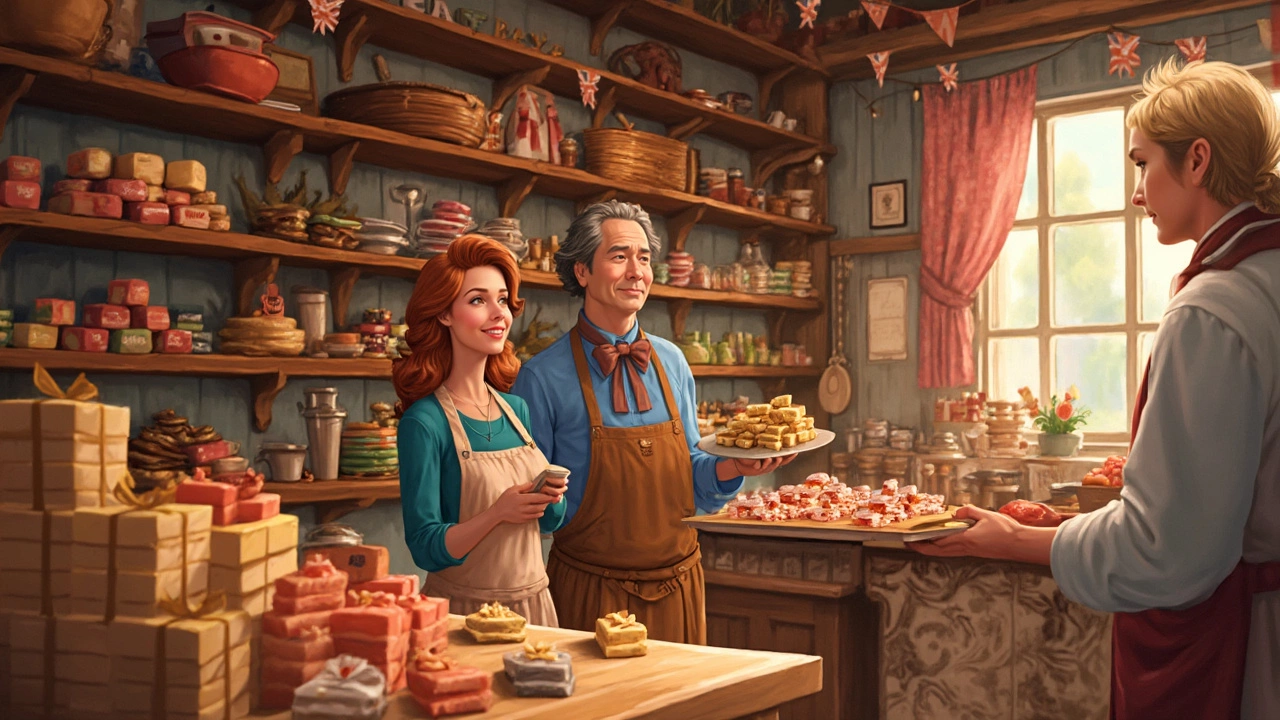
Picture this: a slab of fudge so rich it practically shimmers under the lights, its surface perfectly smooth except for the gentle swirls where the confectioner’s spatula danced. Snap it in half, and the inside’s dense but buttery, melting into creamy sweetness the moment it hits your tongue. If that got your attention, join the club—fudge isn’t just a treat; it’s an obsession for sweet lovers everywhere. But here’s the wild bit: ask three people where to find the world’s best fudge, and you’ll get four different answers. People get downright territorial about fudge—announcing the best can spark more arguments than politics. Is it the crumbly, cocoa-heavy fudge from England? The oozy, marshmallow-laced squares from America? That sun-flecked tablet from New Zealand with a caramel bite? The answer is just as layered as fudge itself.
The Origins and Evolution of Fudge
If you ask anyone who bakes where fudge first appeared, expect some raised eyebrows. The basic ingredients—sugar, butter, milk, and a little salt—aren’t exactly rare or fancy. But the origin story involves a madcap accident. According to archived letters from Vassar College in 1886, a student botched a batch of caramels and “fudged” the recipe, turning an error into a sweet masterpiece. From there, fudge exploded through dorm rooms and kitchen counters across America.
Traditional fudge never used marshmallows. The original versions were intense, made with just sugar, cream, and heaps of stirring (sometimes for up to 30 minutes—arm day, anyone?). British fudge is closer to Scottish tablet: it boasts a firmer, crumblier texture and is flavored with rich brown sugar or condensed milk for brown butter undertones. Americans took things in a whole new direction—introducing chocolate as a must-have and eventually adding marshmallow creme and corn syrup to make it fail-proof. By the 1930s, fudge shops lined the boardwalks of holiday towns from Mackinac Island in Michigan to seaside resorts in England, each claiming their batch as the “genuine article.”
Maybe the most staggering fact? The world’s largest fudge slab, according to the Guinness Book of Records, weighed a mind-blowing 5,760 pounds and was made in Ontario, Canada, in 2010. That’s nearly as heavy as an average adult elephant—clearly, there’s no small love for fudge.
But wait, New Zealand’s fudge scene, much like its ice cream, delivers something special: think buttery, slightly crumbly fudge called “Russian fudge,” inspired by Scottish tablet but smoother and easier to sink your teeth into. Kiwis usually spike it with golden syrup, and the caramel notes seep through without ever overpowering you with sugar. You’ll spot homemade fudge at farmers’ markets, school bake sales, and just about any country café. Local truth? It pairs perfectly with a strong long black.
The magic of fudge, wherever you find it, is its responsiveness. Fudge adapts—taking on flavors like sea salt, ginger, pistachio, or even boozy notes (rum raisin, anyone?). But here’s thing: true fudge should never be hard or grainy. The melt-in-the-mouth sensation, rich and velvety, is what makes fudge legendary.
| Region | Type of Fudge | Signature Ingredients | Texture |
|---|---|---|---|
| USA | Chocolate Fudge | Chocolate, Marshmallow Creme, Condensed Milk | Creamy, Soft |
| UK | Traditional Fudge | Brown Sugar, Butter, Milk | Crumbly, Firm |
| Scotland | Tablet | Condensed Milk, Butter, Sugar | Very Crumbly, Sweet |
| New Zealand | Russian Fudge | Golden Syrup, Sugar, Butter | Buttery, Slightly Crumbly |
Iconic Fudge Destinations & Legendary Batches
If you want to start a war among tourists in Mackinac Island, Michigan, just claim one fudge shop makes the best fudge. There, fudge isn’t just a dessert—it’s the main attraction. The island, a tiny spot in Lake Huron, has almost twenty fudge shops despite barely being a kilometer wide. Here, they churn out fudge on massive marble slabs, using wooden paddles and showmanship that draws crowds. Classic flavors like chocolate and peanut butter sell fast, but shops have been known to make bacon maple and blueberry cheesecake versions for the brave.
Cross the ocean, and heading to Cornwall, England, you’ll find their fudge is richer, partly thanks to clotted cream. Cornish fudge is all about a deep caramel flavor, almost buttery toffee, and queues form on rainy days as people huddle in tiny shops for warm slabs. The famous Roly’s Fudge Pantry, founded in Devon in the late 1980s, keeps to a simple recipe, promising only natural ingredients and hand-cut pieces. Their fudge is soft and crumbly, just sweet enough to balance a hot cup of English tea. Not far away, Edinburgh’s fudge shops double as tourist stops, and some have even added chili or stem ginger to their recipes for an edge.
Best fudge has its own cult following in New Zealand, especially in quirky spots like Wellington’s Moore Wilson’s or the weekend markets in Auckland. There, you’ll find slabs made with local farm butter and a gold caramel tint. Some bakers sneak in manuka honey or flakes of sea salt from the Marlborough Sounds for an NZ twist. Kids here memorize their nan’s Russian fudge recipe almost as religiously as they recite the haka.
But what makes a fudge truly legendary? It’s partly about location and ingredients, but also the freshness. Real fudge, the kind that gobsmacks you, is never old—the best is poured, cooled, and sliced within hours. You can spot great fudge by its sheen (matte rather than glossy), the way it holds its shape but seems to yield the minute you touch it, and the lack of any crust or sticky exterior. Some connoisseurs swear on fudge texture tests: press your finger and if the indent slowly rebounds but doesn’t stay, you’ve found a good thing.
What about vegan fudge? Lately, vegan and dairy-free fudge makers have taken off, especially in Melbourne, Auckland, and Los Angeles. Swapping butter for coconut oil, and dairy with almond or oat milk, some manage to create plant-based fudge that still delivers on the signature creaminess—though purists may argue about flavor nuances. The best versions out there use top-quality chocolate and real vanilla pods, and you probably won’t even miss the dairy.
Pro tip: If you’re visiting a new city, ignore the fancy fudge chains and duck into family-run stalls or weekend markets. Quesnel, BC in Canada boasts fudge stands at their rodeo that rival anything in touristy spots. Try before you buy—most stands gladly offer samples.
| City/Location | Fudge Shop | Distinctive Flavors |
|---|---|---|
| Mackinac Island, USA | Joann’s Fudge | Maple Walnut, Double Dark Chocolate |
| Cornwall, UK | Roly's Fudge Pantry | Sea Salt, Clotted Cream |
| Auckland, NZ | Moore Wilson's | Manuka Honey Caramel, Russian Fudge |
| Edinburgh, Scotland | Fudge Kitchen | Chili Chocolate, Stem Ginger |
| Melbourne, AUS | Mama's Fudge Factory | Vegan Salted Caramel, Coconut Chocolate |

Tips for Making, Buying, and Serving the World’s Best Fudge
Think you need a pastry chef diploma to whip up the ultimate fudge at home? Not true. A kitchen thermometer, heavy saucepan, and just the right timing make all the difference. The vital step is hitting the sweet spot — usually about 114-115°C (about 237-239°F) — known as the soft ball stage. Go higher, and your fudge can get crumbly or even rock solid. Too low and you risk a sticky mess. Seasoned fudge makers love the cold water trick: drop a little hot mixture in a glass of ice water—if it forms a soft ball, you’re golden.
Want a foolproof recipe? For classic Russian fudge (the Kiwi favorite), you’ll want: 200g butter, 1 cup whole milk, 3 cups white sugar, 1 can sweetened condensed milk, ¼ cup golden syrup, and a splash of vanilla. Melt butter in a heavy pan, then add everything else except for the vanilla. Cook gently, stirring. Bring it to the boil and let it simmer, stirring most of the time, for 12-15 minutes. You’re watching for that soft ball stage. Remove from heat, add vanilla, and beat like there’s no tomorrow until it loses its shine and thickens. Pour into a buttered tray and ignore it for an hour, then slice into squares.
If you’re a chocolate lover, American fudge recipes are equally forgiving. They use marshmallow creme, which makes the fudge impossible to mess up (and gives it that dreamy, smooth texture). Swirl in peanut butter, sprinkle with flaky salt, or mash in crushed cookies—you’re only limited by your imagination and sugar tolerance.
Here’s where things get tricky: storing fudge. Never refrigerate it unless it’s hot and humid out. The cold air turns fudge gritty by crystallizing the sugar. Instead, wrap it tightly in baking paper and pop into an airtight tin. It’ll keep for up to two weeks, and possibly longer—though who’s really making it last that long? If you like your fudge a little gooier, store it with a slice of fresh bread inside the container (the fudge nabs the moisture, keeping the bread dry and your fudge luscious).
Curious about pairing fudge? Strong coffee is the classic, but a bold Malbec or even a dry cider cuts through the fudge’s intensity perfectly. Cheese boards, featuring sharp cheddar, sometimes sneak in fudge instead of quince paste at food festivals—don’t knock it till you try it.
Want your fudge gift-ready? Wrap pieces in waxed paper and twist the ends—old school, but charming. Kiwis often tuck fudge next to ANZAC biscuits or chocolate fish as part of care parcels, especially for expats feeling homesick. The nostalgia factor actually boosts the flavor, if you ask me.
Here’s an unexpected tidbit: fudge is a perennially popular wedding favor in the UK and NZ. Guests leave with hand-tied bags, and more than a few couples have reported their fudge vanishing before speeches even begin. Looking for a quirky birthday cake alternative? Stack fudge squares into a tiered ‘cake’ and drizzle melted dark chocolate on top—a total showstopper.
If you’re buying fudge abroad, watch out for the super-shelved, pre-wrapped stuff. The freshest fudge is made locally and displayed in slabs, sliced off to order, preferably by someone with sticky fingers and a beaming grin. Ask for a taste before you commit—the best fudge sellers are absolute pros at persuasion, and there’s real joy in chatting through their flavors.
No matter which style tempts you—the creamy American kind, the crumbly Scottish classic, or Kiwi Russian fudge—the secret, really, is in the freshness, the quality of the butter, and taking the time to savor each bite. On that note, I still haven't settled the debate about the best fudge, but after traveling, taste testing, and a few kitchen disasters, I have to say: the best fudge is the one that takes you straight back to the happiest moment you ever had with sugar. Fancy joining the search?



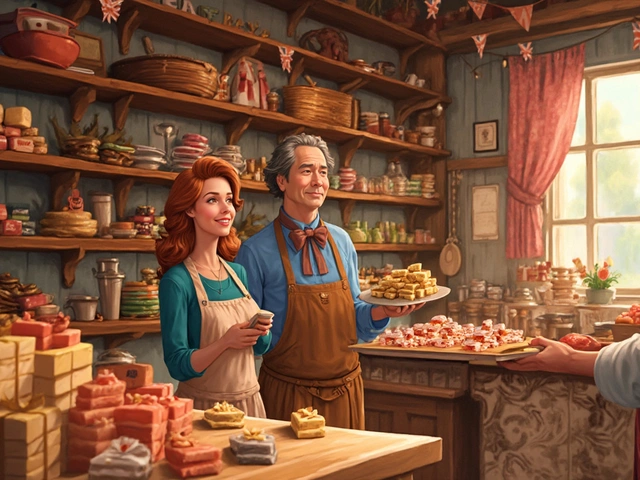


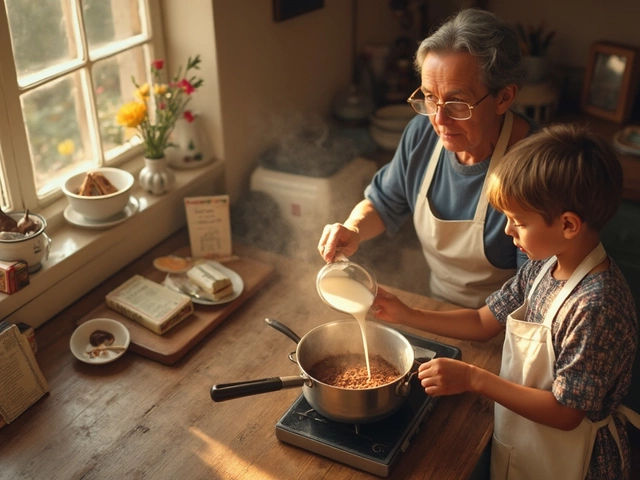


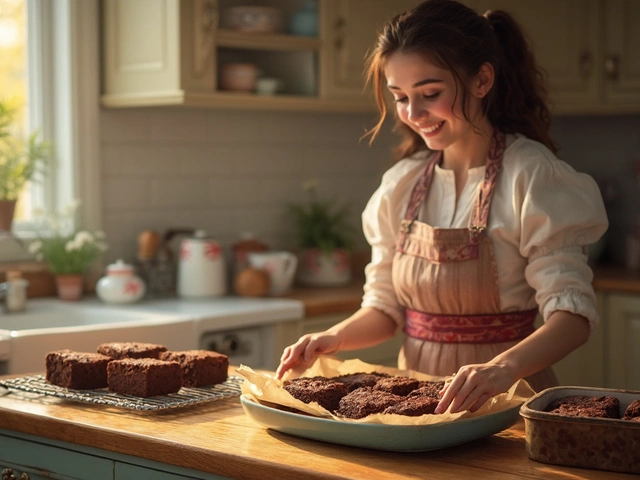
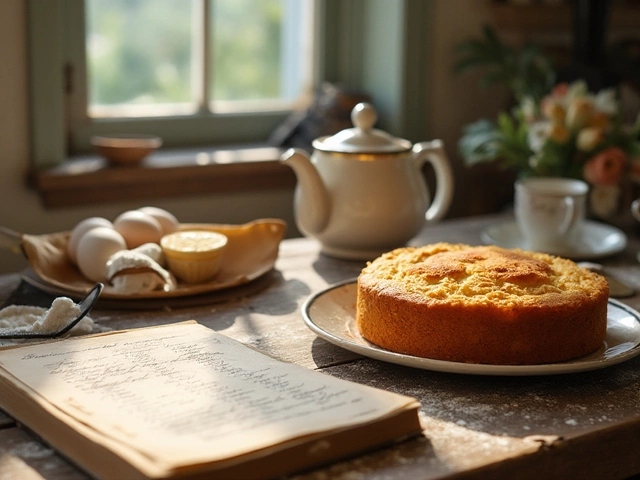

Write a comment